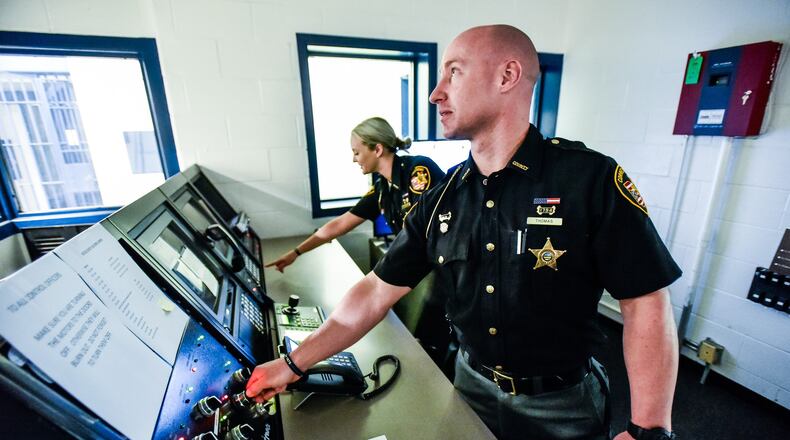The Butler County criminal justice system costs taxpayers about $60.6 million and represents 60 percent of the county general fund.
RELATED: Sheriff re-opens shuttered jail to comply with new state law
“For the amount of money that is expended by this funding authority (the county commissioners) on criminal justice purposes, I think it is incumbent on us to have a comprehensive criminal justice plan and get the players to the table,” Gilkison said. “To look at what are we doing with this money — it’s a big ticket item — and what’s best for the citizens of this county.”
He said if the board isn’t revamped, the court is in jeopardy of losing three grants totalling about $1.1 million that fund 14 court staffers. The two-year grants expire next June, and the board is required to submit a letter supporting the grants as part of the application process.
Gilkison told the Journal-News the board hasn’t met in about a year, so he believes it needs to first update the bylaws and then pick some new people to sit on the board and hopefully rejuvenate it. There are statutory members — like the prosecutor, sheriff, judges, police chiefs and others such as citizens and victims. The board needs to 21 members, according to the law.
Butler County Sheriff’s Office Chief Tony Dwyer said up until recently there haven’t really been any pressing issues for the board — that was previously meeting quarterly — to address.
“That’s what happens when you go for a period of time without pressing issues, you find yourself in a bit of a rut and people fade away,” Dwyer said. “Then you need to reconstitute it and breathe new life because no one wants to attend a meeting that’s not productive.”
The county has had some pressing issues of late that Gilkison said would have been ripe for the board’s review, like the TCAP law that prohibits judges from sending low-level, non-violent offenders to prison.
A new state law took effect this summer that requires Ohio’s 10 largest counties — Butler County is No. 7 — to stop sending non-violent felony offenders who commit low level crimes to prison, with the idea that lasting rehabilitation is more likely to occur at the local level than in state prisons.
MORE: Butler County officials say low wages driving away good employees
The early cost estimate for housing offenders in the county jail was as high as $4 million, but a few months into the new normal, costs don’t appear to be quite as much.
In her budget submission, the sheriff’s Finance Director Vickie Barger noted that from when the new law first took effect on July 1 through Aug. 31, felony-five offenders spent a total of 1,265 days in the jail. At a daily rate of $72 the county spent $91,080 in two months housing those inmates.
Gilkison said it would have been nice to have more input as they were wrestling with how best to comply with the new law.
“It’s an opportunity for the commissioners’ office to get some input from an independent board on how dollars are spent…, Gilkison said. “The Criminal Justice Board I think could have some input and some good insight on how we spend money in the community in general.”
One of the solutions they came up with was the sheriff and the courts agreeing to implement an ankle bracelet monitoring system in lieu of jail incarceration. Gilkison reported to the commissioners there are currently 21 offenders on electronic monitoring, and the sheriff plans to expand that to 50 by year’s end.
Commissioner Cindy Carpenter said the board — that was first convened many years ago — has helped the county secure other grants through the years. She said it is a valuable tool that needs to be re-energized.
“The importance of the board is to get the justice agencies, law enforcement and the courts together so when they talk about the direction they’re going we share resources…,” Carpenter said. “It’s really just a chance for everyone to get together and communicate in a way they may not do. It’s kind of difficult to get representatives from every single agency together because of their busy schedules.”
About the Author
